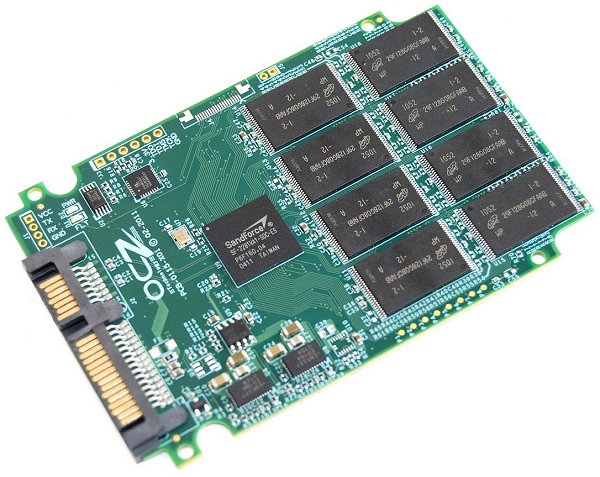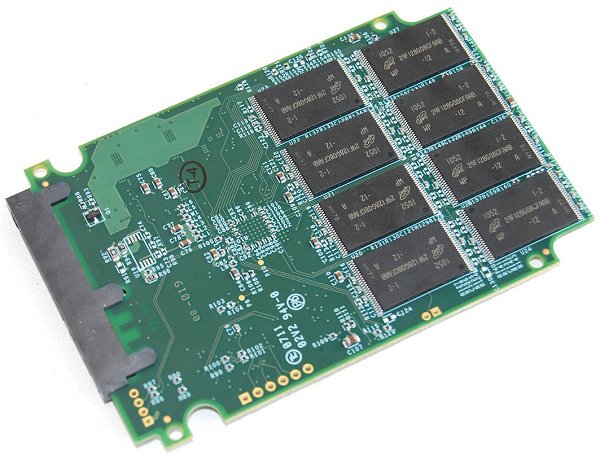Vertex 3 240GB Features & Design
The Vertex 3 series is aimed at performance buffs with initial SF-2281-based models offering capacities of 120GB, 240GB and 480GB. The Vertex 3 has a slim 2.5" design, measuring 99.8 x 69.63 x 9.3mm and weighing just 77 grams. The drive consumes two watts of power when in use and just 0.5 watts in standby, which is the same as the Vertex 2 series.
The 120GB model packs read and write speeds of 550MB/s - 500MB/s while the larger 240GB version is slightly faster with 550MB/s reads 520MB/s writes. The largest model offers 480GB of storage and is actually the slowest, rated at 530MB/s reads and 450MB/s writes.

Naturally, using the SATA 6Gb/s interface is essential to achieving those speeds. The only issue with this is that Intel's new Sandy Bridge platform is the only one to provide native SATA 6Gb/s support – and it does so with only two ports.
Third party embedded solutions such as the Marvell 88SE9128 can provide motherboards with SATA 6Gb/s support, but offer very poor results compared to Intel's implementation. That said, there is a new Marvell 88SE9182 controller that can mimic the performance of Intel's 6 series chipsets, so support for the 6Gb/s SATA is improving.
All three Vertex 3 models are loaded with MLC NAND (25nm) flash memory. Our review sample has sixteen 16GB Micron 29D128G08CFAAB NAND ICs for a total capacity of 256GB. The reason this is marketed as a 240GB SSD is because 16GB is reserved for data parity (8GB for RAISE), garbage collection, and block replacement.

Once formatted in Windows, the original 240GB drops to 224GiB, meaning you lose roughly 7% from the GB to GiB conversion. With an MSRP of $499, the Vertex 3 240GB costs $2 per gigabyte, which is actually pretty decent for SSD standards.
Like the original SF-1222 controller, the second-generation SF-2281 uses data compression technology called DuraWrite. This technology is designed to help lower write amplification and extend the drive's life by using fewer program-erase cycles. The upside is that this doesn't require a memory buffer, while the downside is that it uses more storage space on the drive.
The same Tensilica DC_570T CPU we mentioned in our Vertex 2 review is being used in the SF-2281. Although the CPU remains the same, the compression engine has improved. The second-generation SandForce controllers have a bigger block of silicon dedicated to DuraWrite technology while the garbage collection algorithms have also been improved.

OCZ has given the Vertex 3 the same two-million-hour MTBF (Mean Time Between Failure) rating as the Vertex 2 series. This figure essentially means nothing to the consumer and we really have no idea how reliable these drives are going to be in the very long run.
However, the Vertex 3's three-year warranty should let customers sleep comfortably at night knowing they're covered for a reasonable timeframe. We'd like to drop a friendly reminder here that this won't protect your data, so be diligent about backups.
